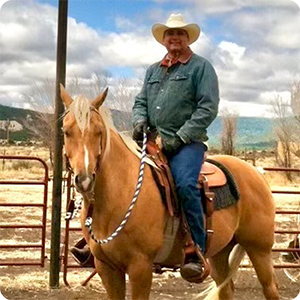From Vision to Execution: Operationalizing Transformation for Sustainable Growth
Unfiltered Perspectives
A Down to Earth Dialogue with George Rollins (BG)
Smile Interview Series: featuring George Rollins, by Aarti Mathurs
Date: July 18, 2023
Head Wrangler, President & COO, Smile Digital Health
George (BG) is an accomplished healthier IT senior executive with over 35 years of experience in the commercial and federal health IT markets. With various senior management positions in significant business programs, operations and acquisitions, he brings an organizational and scalability discipline from a business and 23 years of active-duty military service.
At Smile, George is known for his approachability and his cowboy-themed analogies.
I am thrilled to present this interview with our President, COO & Head Wrangler, George Rollins. George, better known as BG or Big George because of how surprisingly tall he is, is celebrating his one-year anniversary at Smile. In this interview, we learn how his background prepared him to lead the company on its mission of Better Global Health. We also get some incredibly simple, yet profound practical advice on how to lead and manage the culture of business and industry transformation.
This is the first release of our newly launched Thought Leadership Series. Join me in this monthly series to explore cutting-edge, practical and relevant themes in the health tech industry.
AM: You’re coming up to your one year anniversary as Smile Digital Health’s Head Wrangler. Tell me a little about what you were expecting and how you prepared for this role?
BG: Let me lay the foundation of where I came from to answer this question. I came from the US public sector, specifically, a very large systems integrator (SI) company called Peraton. In the SI world, you integrate and modernize things at a large enterprise scale for the federal government. You have to answer questions like: ‘How do we bring all this together— legacy data with modernization - what do you do with the old data?’ and ‘How do we use interfaces?, etc.’ To answer these questions, at Peraton we built a platform using Smile, it was here that I learned about FHIR® and developed my deep appreciation for interoperability and code standardization to liberate Healthcare data.
And, you’re gonna love this, through the years at Peraton and all the way back to my days at IMS Health, I met some brilliant individuals and wouldn't you know it, a lot of them work at Smile today! So, you can see that the thread of this close-knit family started to form around the early age of interoperability, security and scalability. That has now grown into FHIR solutions, applications and so much more. This was a long explanation, taking the horse around the barn, but I am a cowboy (chuckles), that’s where Head Wrangler comes from.
Smile is a different flavor to the SI world I was used to—it was a smaller piece to what I was doing. Simply put, SI companies drive revenues primarily through large staff augmentations using professional services, while Smile is a product company, driving revenue through licenses and implementation services.
I knew this before I joined, so I expected that this would be something different and refreshing from what I was used to. It was absolutely outside my immediate SI comfort zone.
I expected that I had to learn not just about our product but also about our people and culture. Smile and the team did not have to ‘learn’ me. It was on me to do the learning. And, that’s what I did. It included months of meeting staff over lunches and meetings; understanding where they stood on the organizational chart; and learning about the product and culture. I felt I had to take this on before I could make any decisions around Smile’s growth and scalability . That was step one. You may know that I’m a retired military officer. That means I’ve heard all the comments and stereotypes that come with what people imagine that is. I will tell you that I’ve lived overseas on multiple assignments across my military career. That taught me that when I go into a country, I have to learn the language, the customs and cultural nuances and cannot carry expectations otherwise. It taught me the responsibility to learn.
AM: This is such a refreshing take on leadership. Sounds like you were very prepared for this role. What surprised you when you got here?
BG: Two things surprised me right off the bat.
First, the tech talent here is off the charts! Normally, you have some brilliant tech people within a company here and there, led primarily by a really smart CTO who stays at a high strategic architecture and management level. But at Smile, the combination of idea generation, brilliant solutions, great code and how easily the tech folks switch back and forth between solutioning and hands on coding is amazing to see. Maybe it shouldn’t have surprised me, but it did.
The second thing was the amount of process reviews that Smile already had under their belt. I had assumed that there would be very few processes in place, let alone certifications and successful audits. You need that rigor to scale. So, Smile was further along the path that all startups need to move along, to get to growth and scalability. I've never seen a company that had this much buy-in around these processes. It was like a textbook of industry standards. That’s why we were able to move so quickly, because I didn’t have to try to change anything when I joined. I massaged in new processes and aligned the business side as part of the daily process, especially around consolidating delivery at scale.
AM: Change in leadership, especially during a start-up’s growth phase can be a tough and messy process. How did you carry out this change at Smile?
BG: I've encountered situations where large companies express the need for change and reorganization, but lack the necessary buy-in from their workforce or the leadership team. I have gone into companies to implement change and growth. In some cases, I have to admit, it didn’t go so well, but those experiences taught me invaluable lessons about the power of culture and dealing with established mindsets. Those experiences made me realize that growing effectively and efficiently, both in terms of revenue and overall performance, presents a far greater challenge than most people realize. While cost reduction can boost the bottom line, it often impedes growth and kills culture, which goes against your objectives…. It’s difficult but every company must grow.
AM: Transformation of any kind is a messy and nuanced process. When you think of the culture of transformation - for you personally and as it relates to the culture of the company during times of transformation, what does that look like for you?
BG: We’ve just hit the half-way point for 2023. Under our annual operating plan, we are right on target for where we want to be. Sometimes, people tend to think we should overachieve and do better because that’s exciting. But think about this: Transformation, it isn’t just about us. The whole industry is changing; it’s volatile, and that makes people uneasy.
I’m comfortable with change and the abyss. That’s what I bring to the equation. The way I handle it is like a mission and pretty straightforward. I ask: ‘What is the problem? Walk me through it. Now, how do we align ourselves with the solution?’ We have to recognize that and decide: ‘do we storm through the problem, or do we pace and address it?’
For example, when you go from startup to scalability, one of the key business metrics is to understand utilization rates. This is very different from when we had 30 people versus the 350 people at Smile, with over 50 concurrent contracts across 16 countries, today. So, I absolutely insisted on ensuring Netsuite time keeping compliance to capture and measure it across the board, there is no way we could manage this otherwise. Getting everyone on-board is part of transformation management on an organizational level. There’s resistance, there is discomfort and fear. There are stereotypes that get thrown in as well. All of that is ok…we communicate what we are doing and why and steadily move forward.
Today, we're at 90% compliance on our daily timecard or our weekly time cards. We have incredible visibility so we know what everyone is working on and we can continue to adapt and reorganize as needed. This has hugely benefited us on the path to scalability, growth and profitability, because we are managing to ‘what the mission is’. This informs our culture. It’s like a river flowing. Rivers bend around the landscape and flow around obstacles naturally. It just goes where it needs to and if you let people work and manage the landscape around them, like a river, they will naturally know where to flow and do their work.
AM: I have so many more questions to ask you about the culture of transformation in the larger industry and how we are operationalizing Smile’s massive vision, so, I’m hoping for a part 2 with you soon. Thank you George!
BG: Of course!


